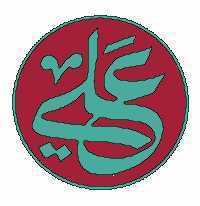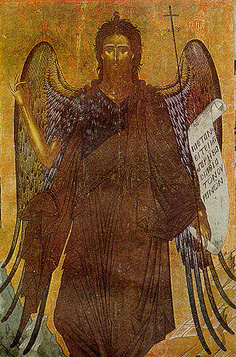The Desert's Seductive Charm: Part III

"فِتنَة ُ الصَحراءِ "
The Desert's Seductive Charm
A Novella by Aḥmad Abū Khanayjar
The Desert's Seductive Charm
A Novella by Aḥmad Abū Khanayjar
(Translated from Arabic by Khalil al-Wafa')
(٣)
I don't know where this gentleman gets all this prattle!? He is recollecting ancient beliefs which were lively in the regions of the desert and the tribe in a day when dominion was held by ignorance and superstition. But today religion and science have completely vanquished ideas such as these; by which primitive minds confronted the universe in order to live in agreement with what was found to explain the natural phenomena which their comprehension were unable (to grasp) - like the reflection of the moon's image in water.
I think I know the motivation for this detail which he wants to add to his narrative. But this logic will drag him into numerous inconsistencies either with the original tale or with the events as they took place. Also, things being what they are, he has left out some (details,) like the moon's riding a camel on his descent to the desert.
As for the inconsistencies which I have in mind, it is the creation of two identical young men. This isn't possible. And also their being puritanically chaste, despite the fact that one of them – I will not be able to clearly say his name without reliving the struggle and causing the rivers of blood to flow again – was caught naked inside a woman's tent, who continues to swear to his virility. And had it not been the will of God for the wise men to intervene, things would have gone in a very different direction. And he, on account of this, reduced the number of heads of cattle from their herds and secretly transferred them to the herds of the woman, since her husband was away (at the time.) And this is at least one of the reasons which compelled them to leave for the market – to fetch a new male camel which could introduce new blood into their herds; since the family of the woman made it a condition that (they would) take every male. As for the old camel herd, I will not dwell on him, since he is like the waiter in the cafe. But I will reveal to you a secret. The two young girls who were mentioned at the well during the moment of the eclipse, one of them was no other than "Safiyya," their cousin.
But what is aggravating is that this council which he is holding by unfurling a tablecloth, sitting around and extensively lingering there - all of this is intended to create a distance from the events. But this will be over my dead body.
• • •
-7-
Now...
Allow me to move my feet to let the blood flow through them as I loose what binds them as a result of sitting in the previous council too long; so that I have the strength to complete all that I promised you in the way of "texture," and so that you are able to choose your own garment according to your own measurements, and people, everyone, can see it. I am the opposite of the emperor's tailor. I have not sought the refuge of a dark, remote room in which to place the loom. Instead, I have assembled the loom in broad daylight, facing the moon, in the open air, at the beginning, (from whence) the road forks and the side streets branch out like those which confronted Oedipus when he was returning home. But this is another story.
I'm talking to you!
My promise is still standing. I will finish the rest of the councils for you at the earliest opportunity. But now, let's go back to the two young men and their third, the husky camel, being led by his bridle calmly and obediently, passed from hand to hand. Or else they left the reins to him, as it walked between the two of them like a child between his two parents. (The camel) catching snippets of the conversation which was going on between them, displaying – from one moment to another – it's desire to participate (in the conversation,) by drawing their attention to himself by either getting a little ahead of them or falling behind to graze on some vegetation at the side of the road. And in each of these situations, one of the two young men would hurry to grab the bridle and pull the camel behind him.
As you can see....
The trip is calm, going along exactly according to plan and design. This is the point at which the roads begin to diverge, splitting into three paths:
The first goes straight in the direction of the tribal camps.
The second goes into the grazing fields, bypassing the tribes from behind. Indeed, it might take the un-experienced traveler into the depths of the desert.
The third goes straight into the vast wilderness, where there is (only) certain death and perdition. This third road passes between two huge boulders, to the right of which the second road passes and to the left of the two boulders, passes the desired track of the tribes and the camel race, whose appointed time was approaching.
The two of them smiled and their souls were happy when they saw the road diverging. So they let go of the rein of the camel, who no sooner felt the slackening of the bridle from them, then it started running towards the two boulders and knelt down between them. Bewilderment traced its lines in the eyes of the two young men when the camel seemed to them to be kneeling, burdened by the weight of his heavy load - the two boulders. His head facing the road of the vast wilderness. The camel had closed its eyes and started moving its mouth as it growled, a thin foam collecting around its nose and mouth. The two of them walked ahead in his direction fearfully. Each of them sat down on a boulder as night began to drop its curtain.
• • •
-8-
The origin of the story of the two boulders is that a man had lost his way in the desert on his camel, finding himself in so much trouble that he looked out over (tracts of his own) annihilation. So he put a pebble under his tongue, trying to squeeze water from it in order to combat the thirst and dryness of his mouth. While he was sleeping near his camel, he awoke to a strong uproar breaking out around him, and the gurgling like the gurgling of water flowing among rocks. He thought to himself, 'I must be dreaming, or else these are the first throws of death, appearing as a craving for water. But the camel pressed him close to his side, so he sat up.
It seemed as if a cyclone had uprooted (everything) after it struck the area around him, while the weather was returning to its tranquil state. He stood up and saw it, the Sesban oasis, rising up in the middle of the desert. He stood up awe-struck, for despite all the stories which he had heard, he had never believed in the existence of a hidden oasis in the desert. He had always thought it was one of the fantasies and illusions of travelers along similar desert paths, by which they pass the time and make a long journey feel short. But now here it is, in front of him, just as the stories described.
It is an oasis whose dimensions are un-apprehensible to the eye from a distance. A wall of Sesban bushes, in all their verdant splendor, encircles it. From thence is derived its name. The uproar was coming from inside it. He went forward cautiously, followed by his camel. When the sound of water struck both their ears, the man stopped, wondering: Is water the bait, leading them to the trap of entering the oasis from which no one exits or returns?
The man noticed from his position that the weather was beginning to get colder and the moon was becoming more radiant. His eyes glimpsed something like watermelon vines extending their ends outside the wall of thick Sesban. He approached it to be sure of what he saw. He reached his hand out to the leaves of the plant to see if they were alive or if he was suffering the agonies of an incipient death as it now was tricking and deceiving him. But his hand collided with a fruit, pushing the leaves aside with his hand. The size of the fruit startled him.
He didn't think any more. He grabbed his camel and made him kneel between two fruits. No sooner did he pass the end of the net underneath them, then he cut them with his knife from the plant and he bound the ropes of the net to the saddle. He was moving eagerly and with fervently, afraid of being exposed whereupon the people of the oasis would capture him and drag him inside where his certain perdition lurks. He struck the camel cruelly on its backside, so the camel rose, struggling to its feet, complaining of its poor treatment which he had never received from his master before. With one leap, the man mounted the camel, spurring him on its side. It was as if the camel sensed his danger, so it ran far away from the oasis.
The stories say: "The oasis faces the tribe's camps." So the only thing the man had to do was turn his back on the oasis and travel until he found himself among his own people.
The camel started out quickly. Then, gradually, his pace started to slacken until he stopped completely where some say that the fruit started to get heavy. The sun was on the verge of rising when the camel knelt down. The man thought: (I) must have to leave the watermelons here – in the desert – and go with the camel, to save myself first and then return with the camel another time to transport the one proof of the existence of the city of Sesban.
He tried to free it from the net, but he couldn't. So he was forced to untie it from the saddle and leave it. On his way, he laid markers to lead him when he returned.
But when he returned with a band of his brothers and cousins, the two watermelons had turned into two boulders around which hung ropes of the net.





























0 Comments:
Post a Comment
<< Home